Vaasa is a city in Finland on the west coast, on the Gulf of Bothnia. Its population is almost 70 000. Vaasa is a bilingual municipality with Finnish and Swedish as its official languages. The population consists of: Finnish speakers = 65%; Swedish speakers = 23%; People with other mother tongues = 12%. Surrounding municipalities have a clear majority of Swedish speakers. Thus, Swedish maintains a strong position in Vaasa. This makes it the most significant cultural center for Swedish-Finns.
Industrial Art
Industrial art means different things to different people. I use it in a general sense to refer to products made through industrial processes that result in something attractive, not necessarily beautiful. Textures produced by industrial processes are an example. Thus, in Vaasa, I decided to document the variety in textures found on the streets.
Maintenance hole = manhole covers are another example of industrial art. These are removable lids over the opening of maintenance holes, that are access points large enough for a person to pass through. They are designed to prevent anyone or anything from falling in, rainwater excepted, in some cases. I take photographs of them, but expand my collection by collecting photographs taken by others.
A weblog post on industrial art is being prepared, for publication on 2024-09-21.
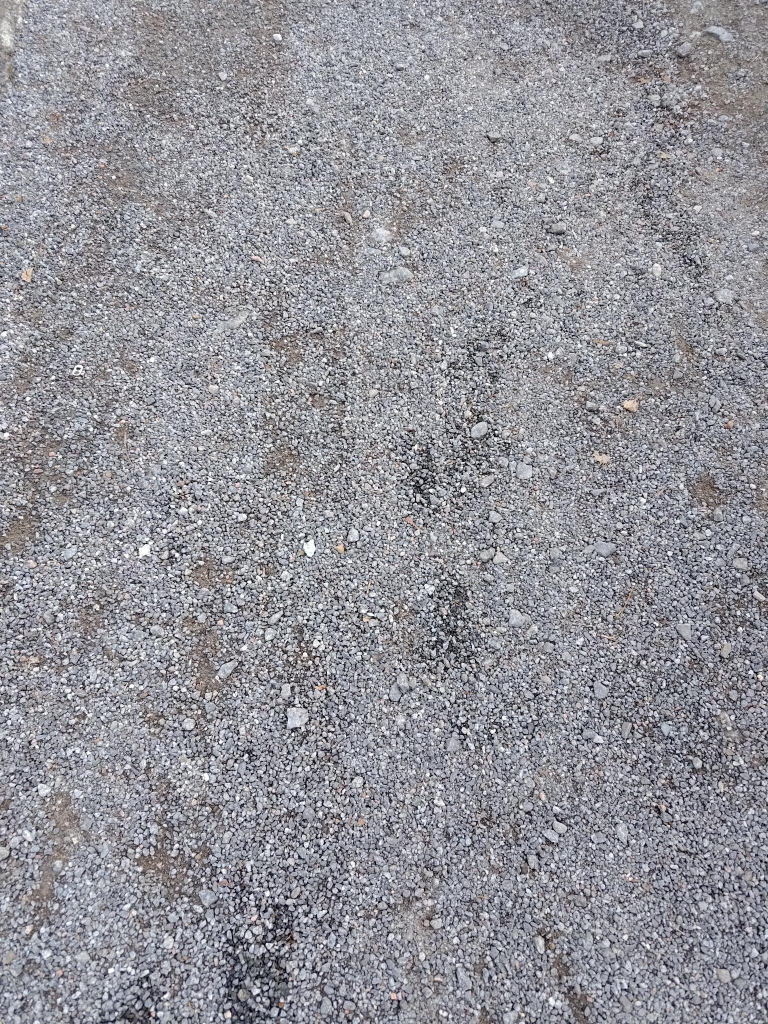
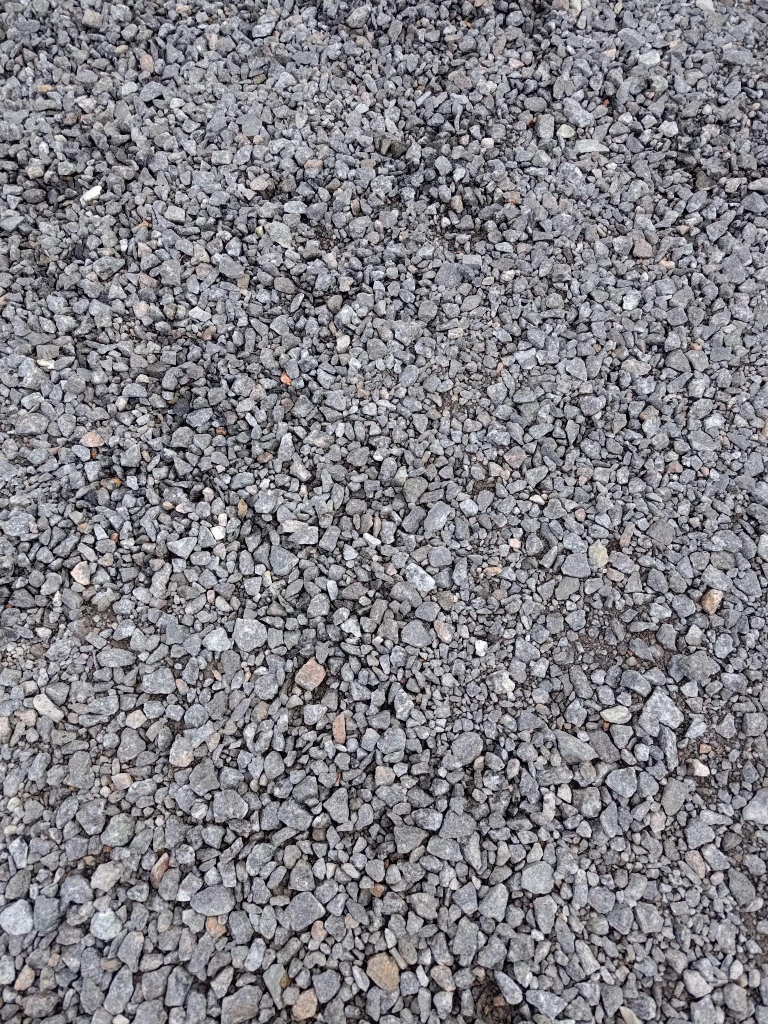
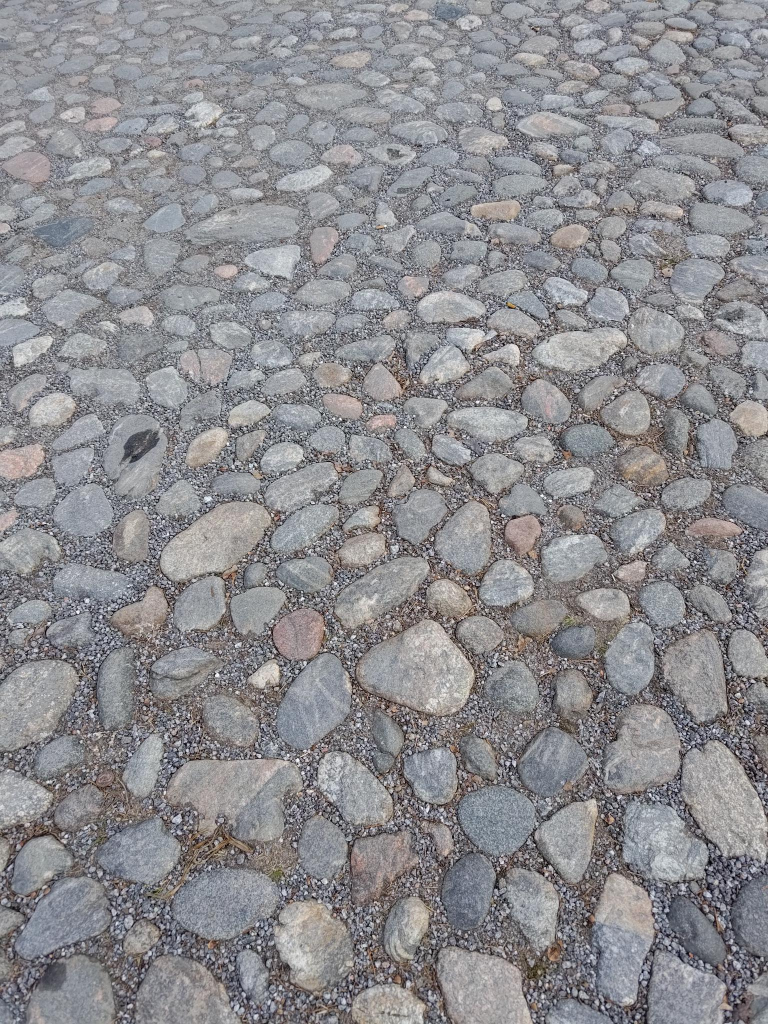
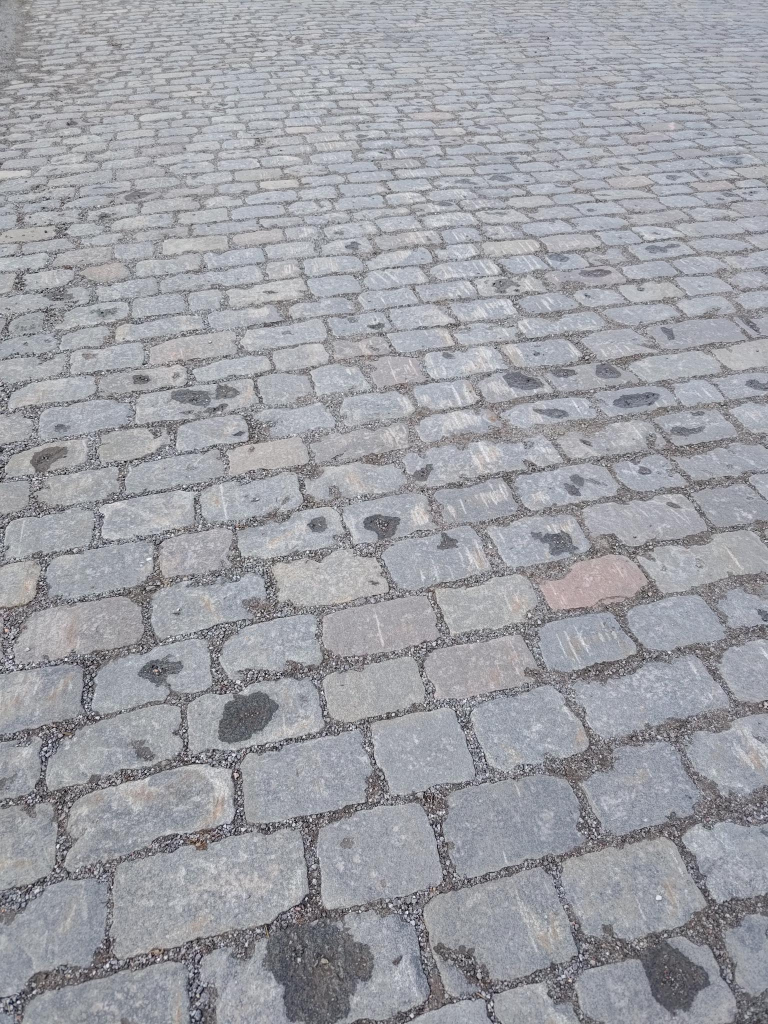
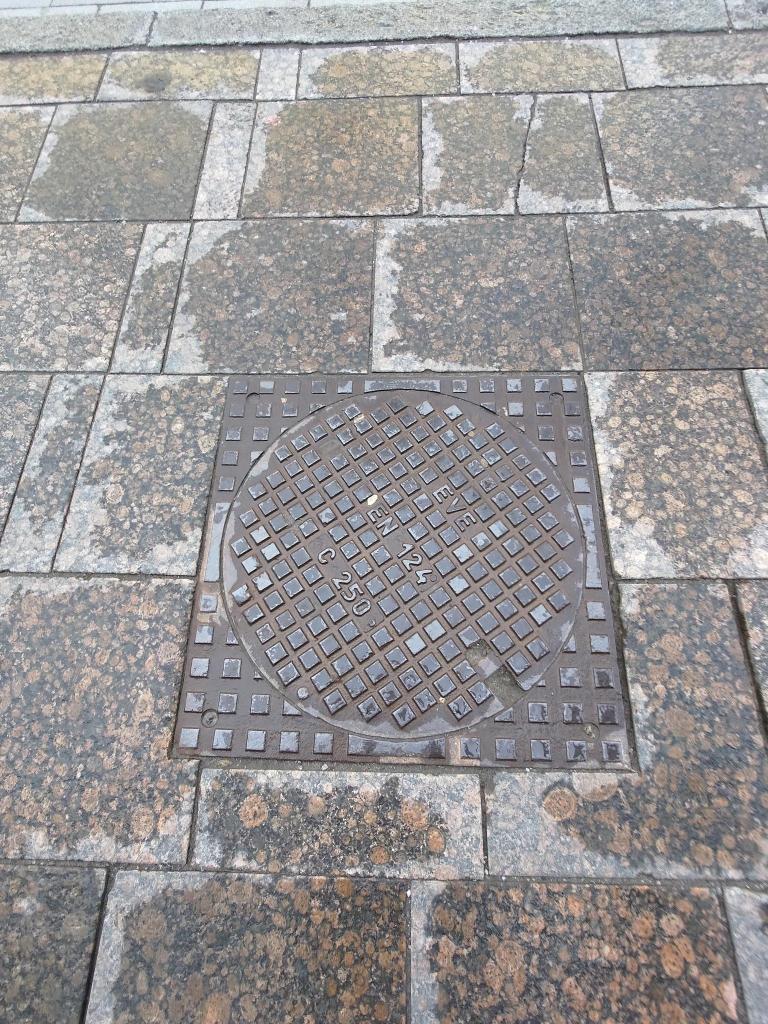
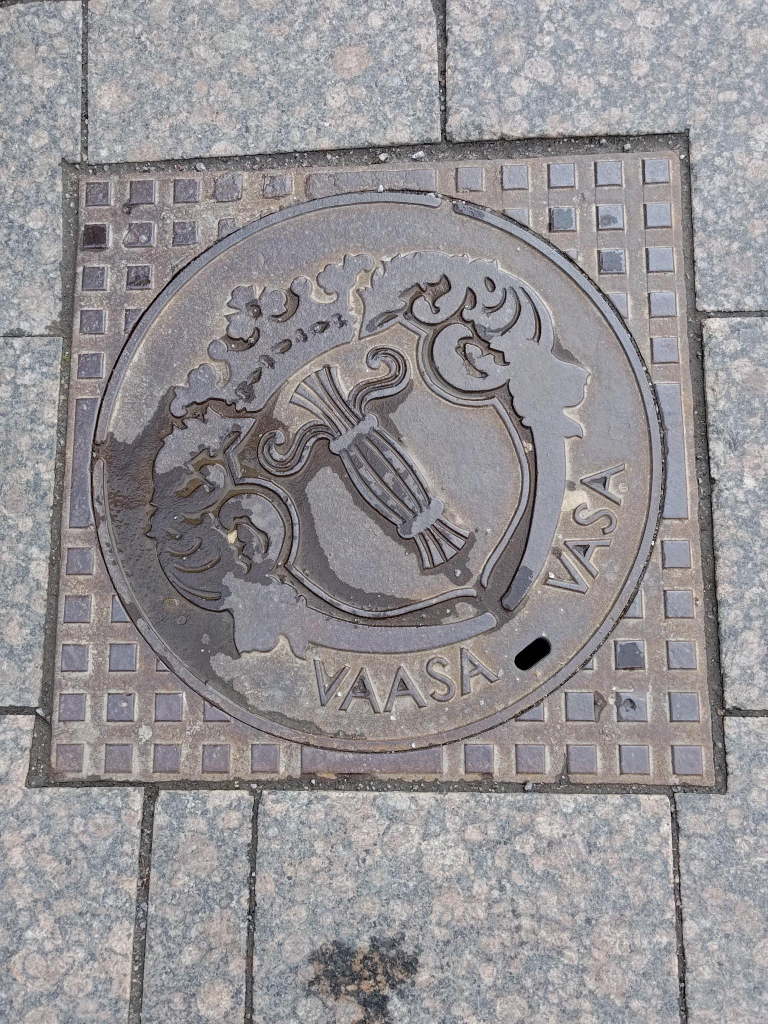
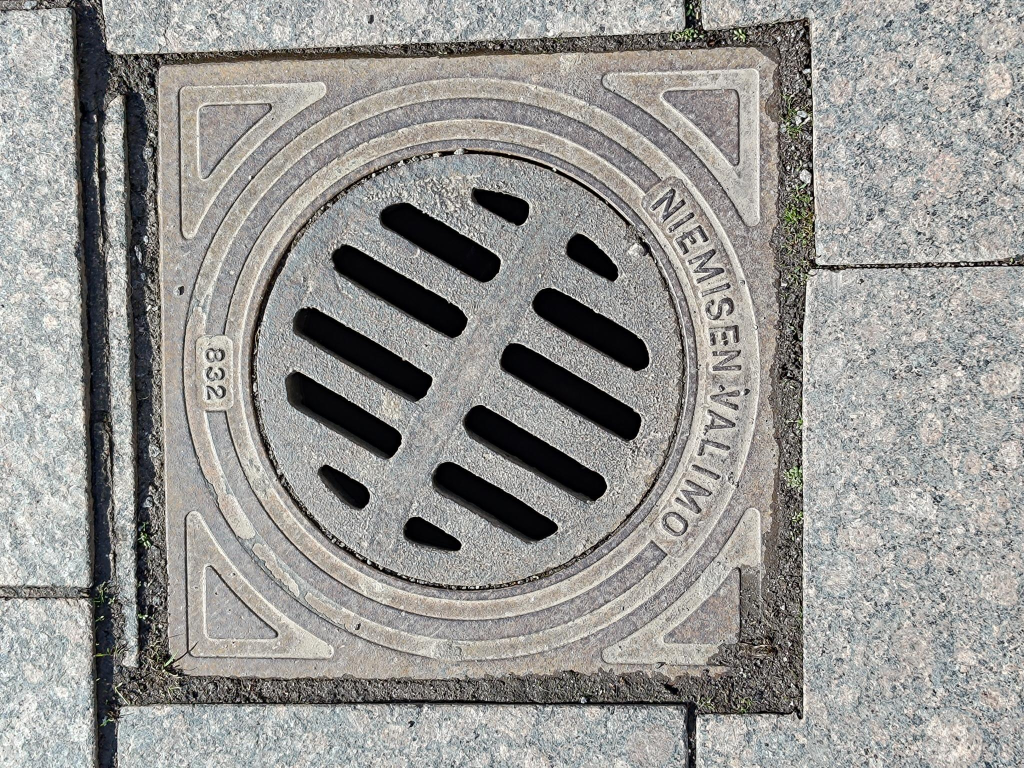
Sculpture
Three statues are presented, along with a comment about a fourth work not included.
Street art is not always appropriately labelled, or even labelled at all. Such is the situation in Vaasa, with the following three works. It took time, measured in hours, to find the title of each work, its constructor/ sculptor along with birth and death dates (where appropriate) year it was made, and other details about each work. This is one reason encountering street art is so much fun.
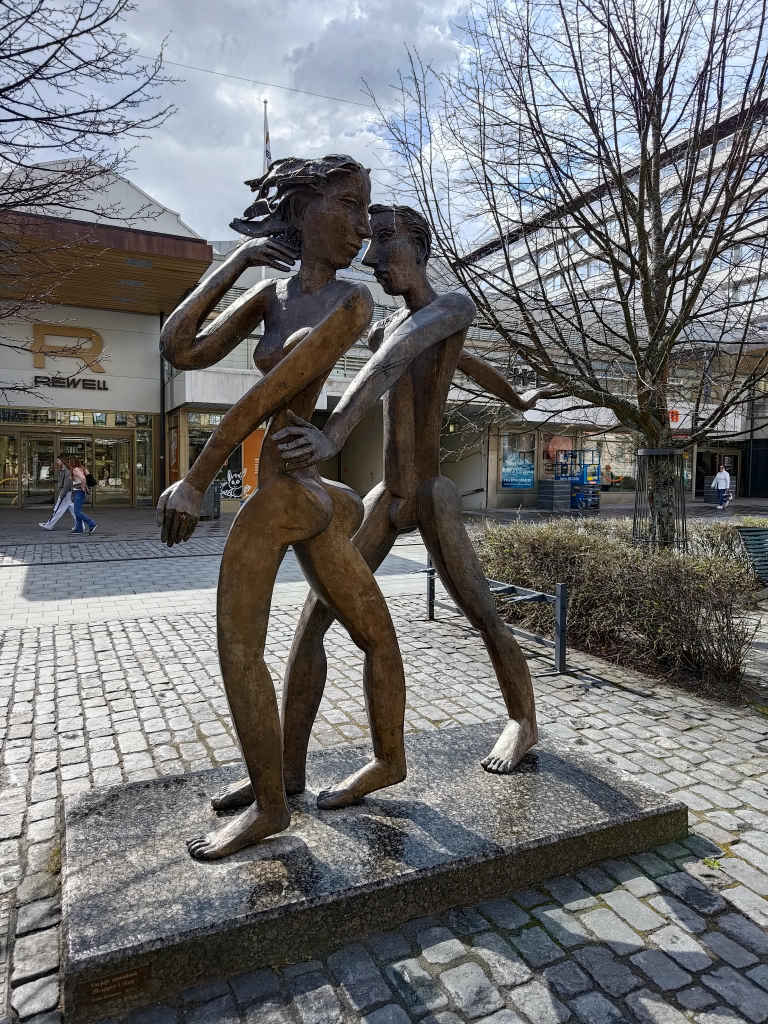
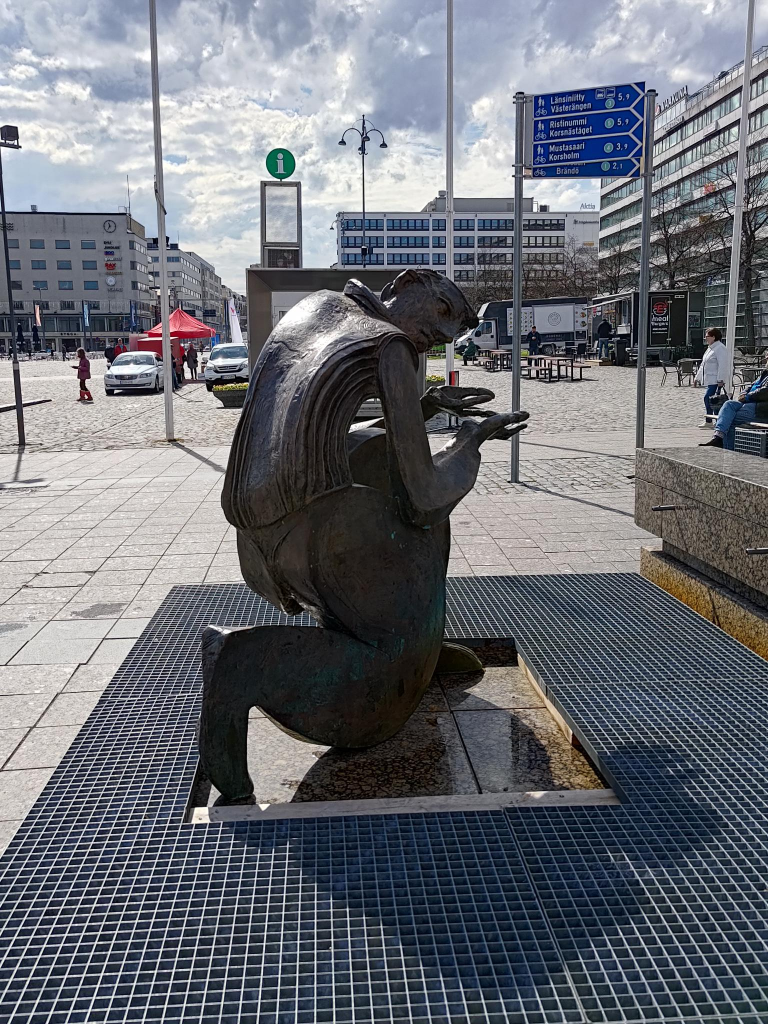
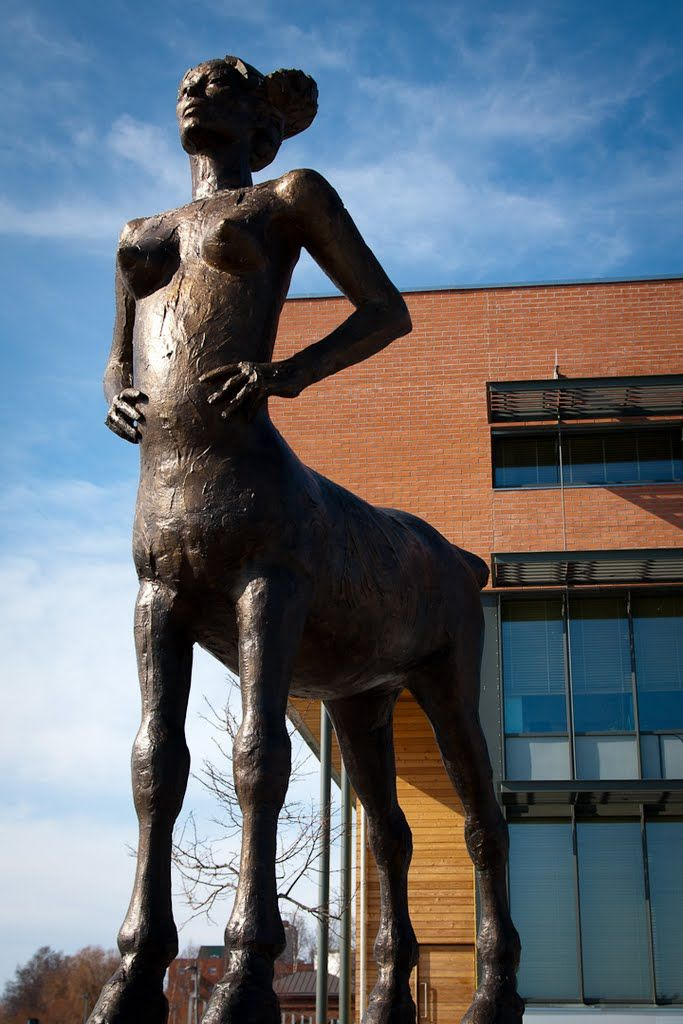
Political comment 1: Centaurs are mythical creatures, part human and part horse. This composition has led many to treat them as liminal = intermediate beings, caught between two natures. Like all mammals, they come in both male and female = centaurette, varieties. I see Leimu’s work as being in direct opposition to the centaurettes appearing in Disney’s film Fantasia (1940). Originally, the animated centaurettes had displayed their breasts, but that was deemed too offensive for audiences, so these were quickly covered with garlands of flowers. Finnish sauna culture means that the human form, in both of its common varieties, is frequently seen and accepted as natural.
On two occasions, and for several minutes both times, I contemplated photographing Suomen Vapaudenpatsas (Finnish) = Finlands frihetsstaty (Swedish) =The Statue of Liberty, a monumental bronze sculpture. I decided against it, but would include an appropriate link. The height of the work with its pedestals is 14 m, the bronze statue at the top is 6 m. The sculpture was designed by Yrjö Liipola (1881 – 1971) and Jussi Mäntynen (1886 – 1978). It was unveiled in 1938.
Political Comment 2: I find the celebration of war distasteful, and this statue is a tribute to the Whites in the Finnish Civil War in 1918. This work is an adulation of one person, General Carl Gustaf Emil Mannerheim (1867 – 1951), who is displayed three times life size. The Red Guards, composed of industrial and agrarian workers, controlled the cities and industrial centres of southern Finland. The White Guards, composed of land owners and those in the middle and upper classes, controlled rural, central and northern Finland. The offensive part of this work is that is fails to unite the Red and White factions after the end of the war, but focuses on one side’s victory.

